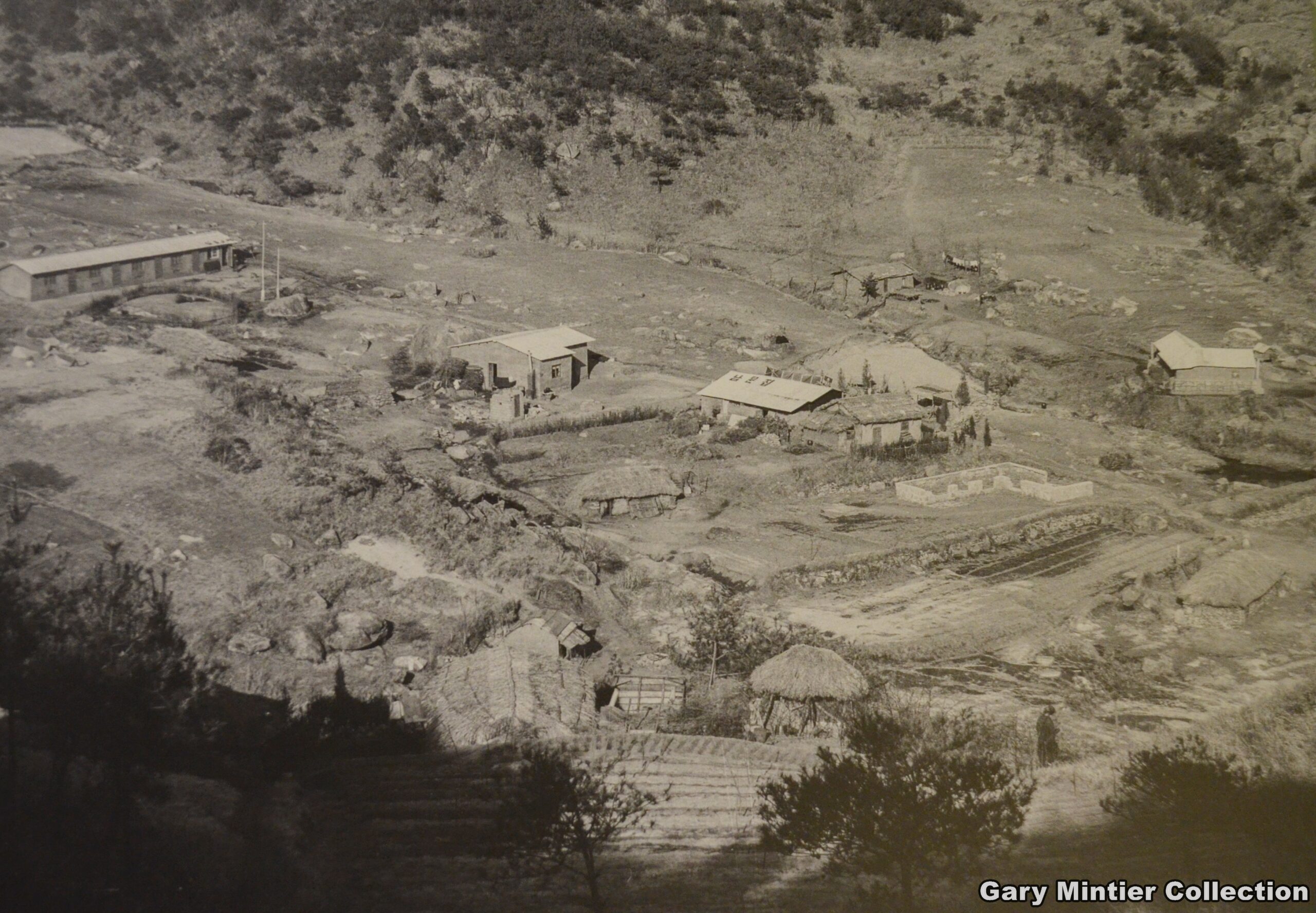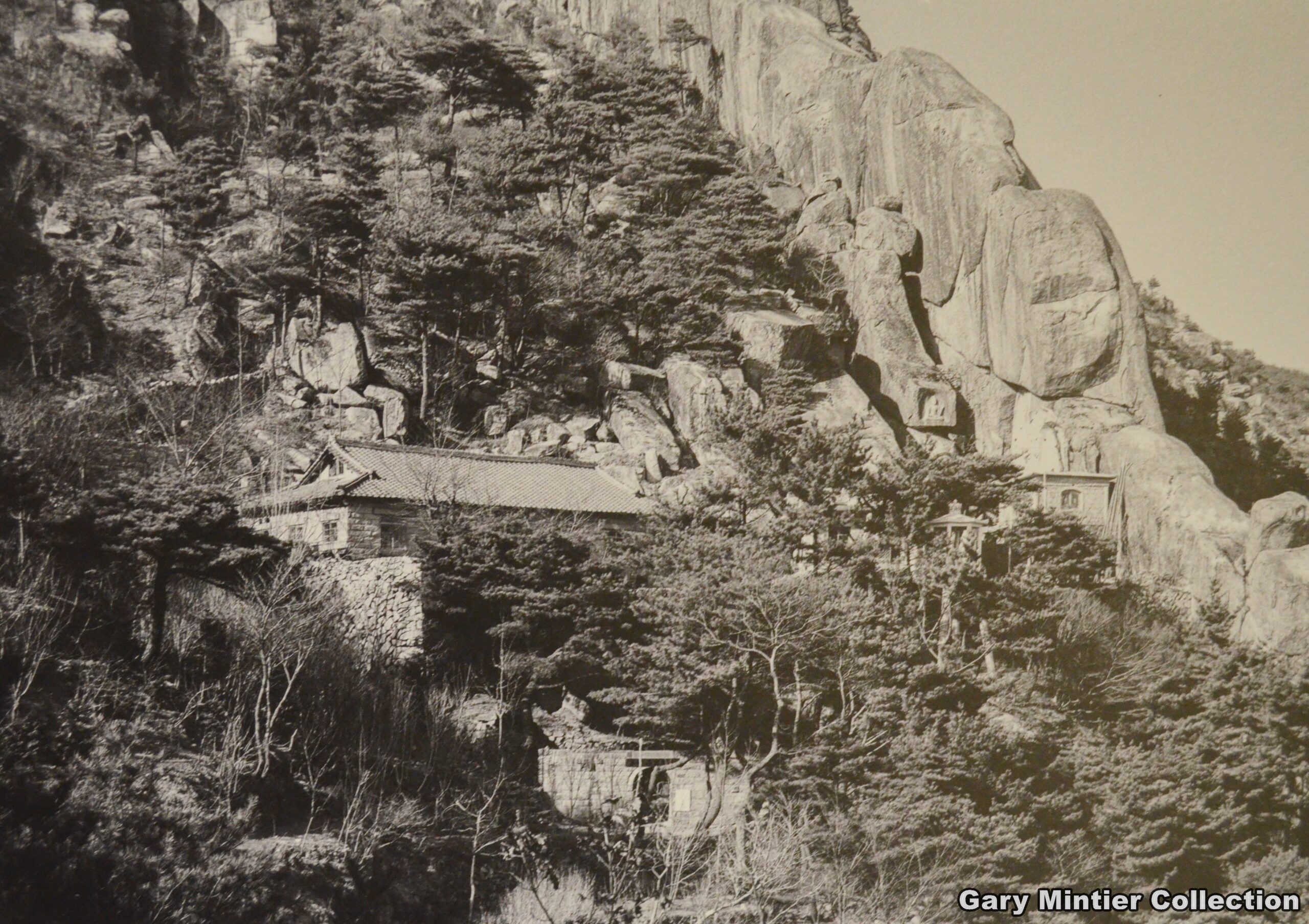Living History – Gary and Mary Mintier (Peace Corps – 1969)

One of the great things about running a website about Korean Buddhist temples is that you get to meet a lot of amazing people. And a lot of these amazing people have varying backgrounds, interests, and insights. Rather amazingly, some of these people first visited Korea in the 1960s, 1970s, and 1980s. Here are their stories!
Q1: Where are you originally from? Introduce yourself a little.
A: I grew up in Ohio and graduated from Ohio University. I married Mary Ann Llewellyn from New Jersey.
Q2: When and why did you first come to Korea?
A: We joined the Peace Corps in October, 1968, and we went to Korea in January, 1969.
Q3: When you first came to Korea what city did you live? Did you subsequently move around?
A: We lived in Busan for 2 years and then moved to Seoul, where we spent almost 4 more years.
Q4: What was the first temple you visited in Korea?
A: Beomeosa [Temple] was the first temple we visited, since it was close to Busan and quite famous.
Q5: What drew your interest to Korean Buddhist temples? (Buddhism, architecture, art, history, etc)
A: My interest developed from the remoteness of many temples. They had a quiet solitude often not found in Korea’s cities at that time. Even the temple’s in the big cities somehow seemed to drown out the everyday noise of life. I would often take several buses to get to some of the mountain temples. And then an hour or so hike up a mountain to find what I thought was the best. Fortunately, I often arrived in the early afternoon and could then have lunch with the monks at those temples.
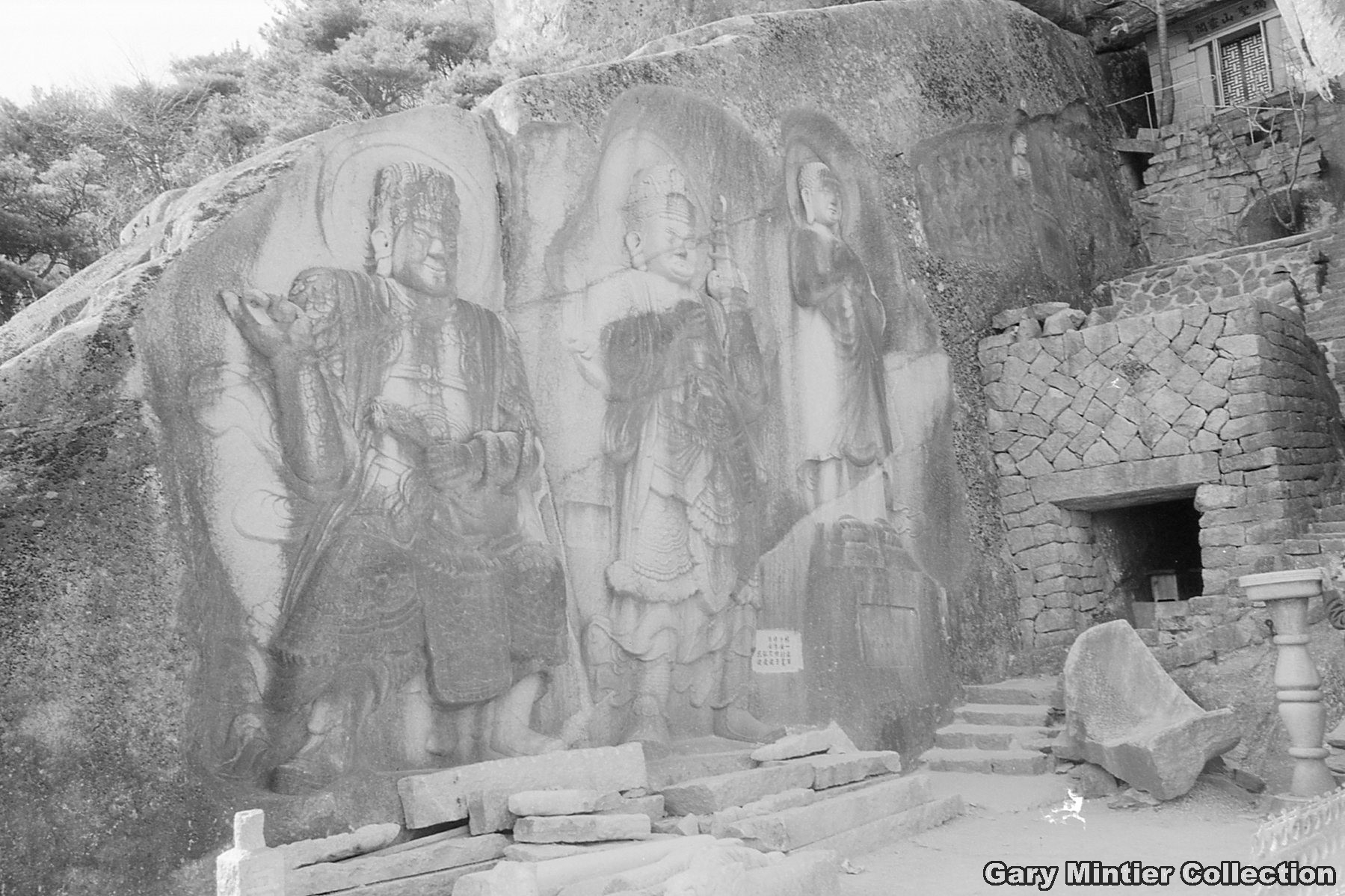
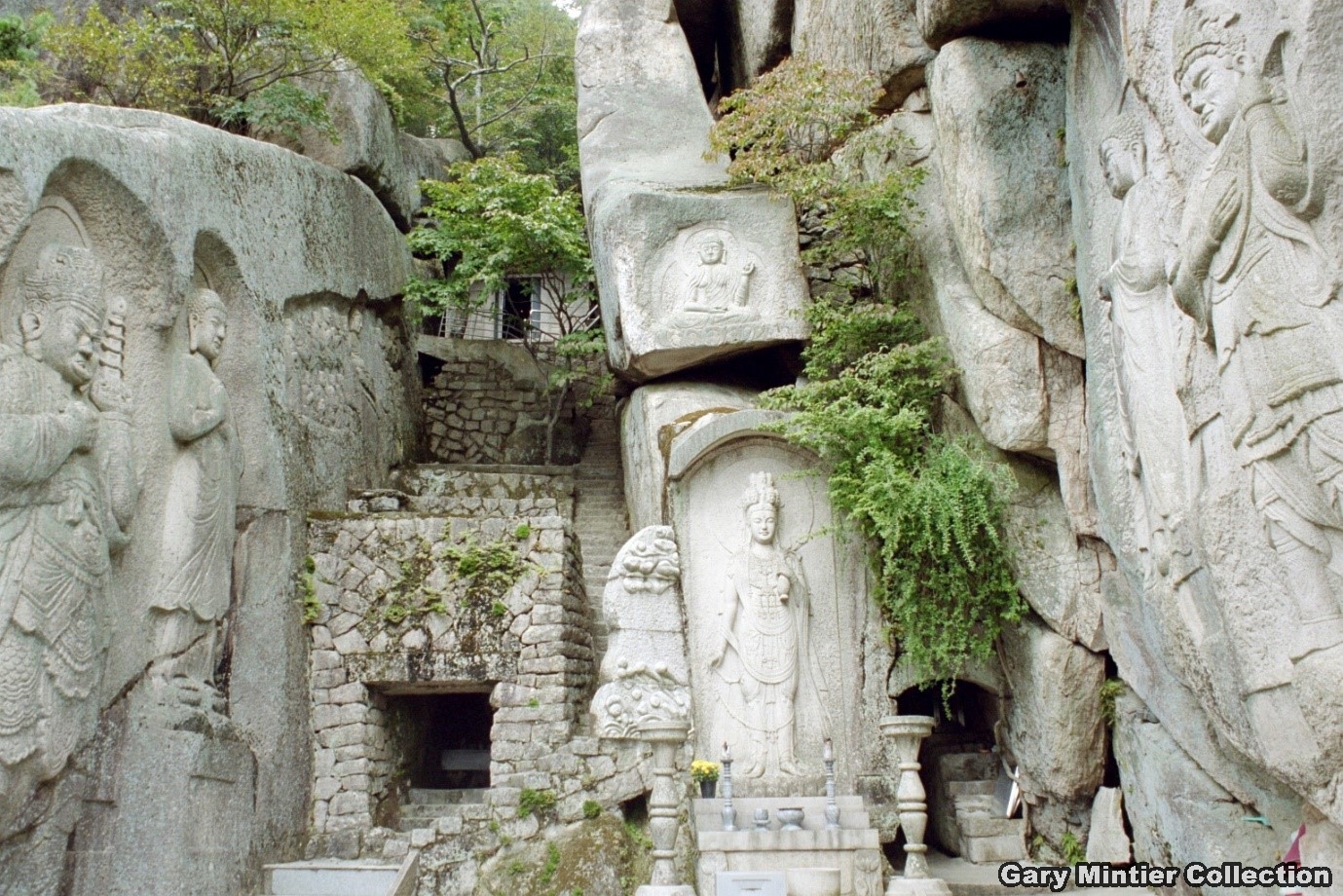
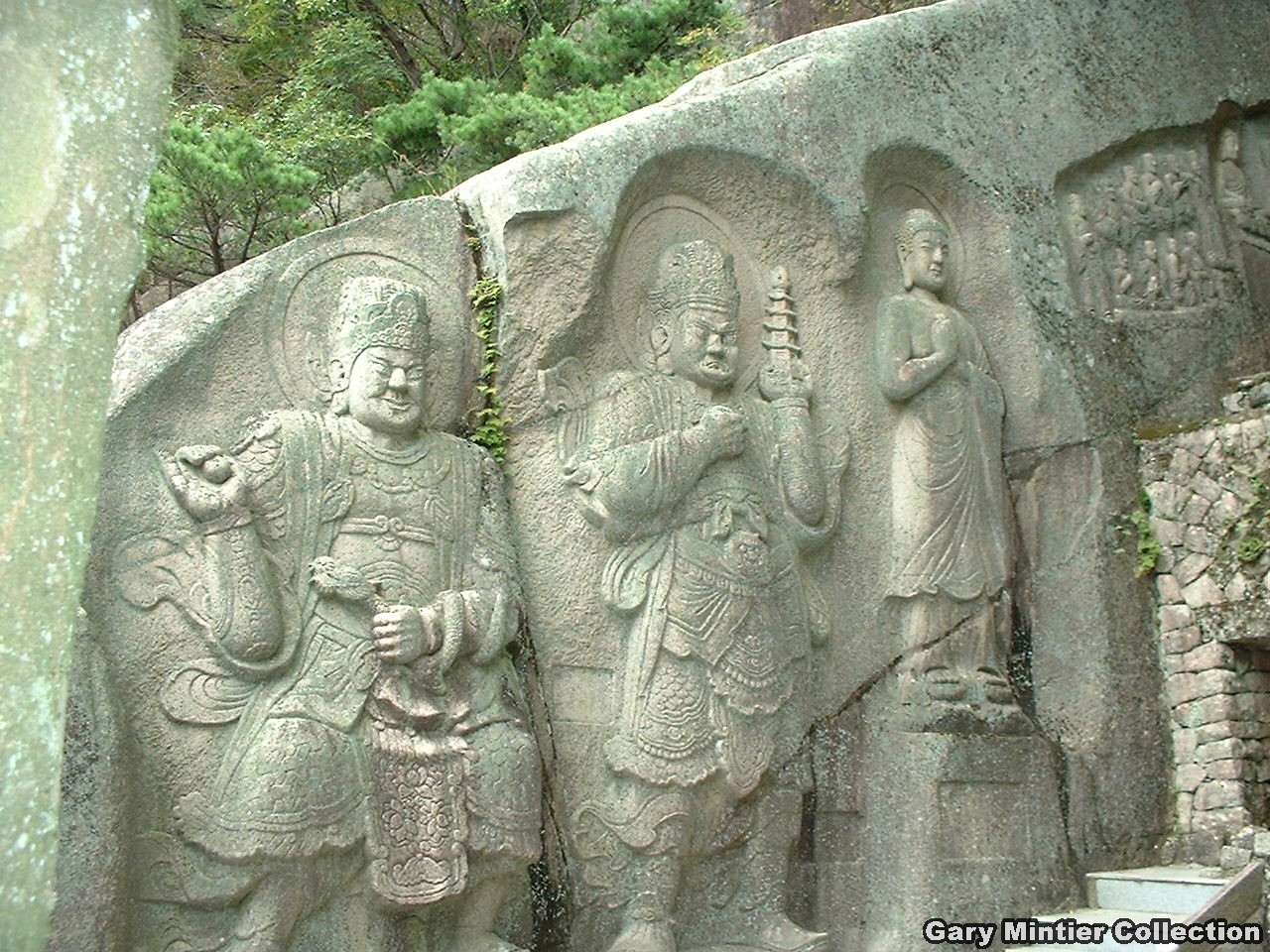
Q6: What is your favorite temple? Why?
A: My favorite temple is Seokbulsa [Temple] known back then as Pyungpungam [Byeongpungam Hermitage]. When I lived in Busan, it was only accessible by taking the cable car up to the old North Fortress and then turning left for a 45 minute hike across the top of the mountain. The path would lead you to just below the temple; and most times as you approached, you could hear monks chanting and striking a wooden bell or clapper [moktak].
Once there, I was amazed by the Buddhist figures carved out of stone. The carvings held up to the story that “sculptors do not create figures, but only release them from the surrounding stone.” And it also included an artesian well hidden in the cleft of other rocks. With the path as the only access, it was truly small but peaceful. I took many a friend there to see it.
Fast forward to 2004 on our first time back in Korea since 1975, and I wanted to see this temple again. The years had taken their toll on me and the hike across the mountain was a bit harder. There were more paths which were unmarked save from a few stones pointing the way. Luckily one of them read Pyungpungam [Byeongpungam Hermitage]. I arrived at my favorite temple rejoicing that it had not much changed. The one difference was that there was now a paved road leading up to it, LOL.
After a nice visit, I walked down the road and took the subway back to downtown Busan, where we were staying.
Q7: What temple or hermitage has changed the most from when you were first got here? What has changed about it?
A: Not sure how many other temples have changed. The only ones I have really revisited besides Seokbulsa [Temple] and Jogyesa [Temple] in Seoul is Beomeosa [Temple]. Of course, Jogyesa [Temple] is now surrounded by skyscrapers, but it still maintains a quietness about it. But Beomeosa [Temple] now has a great museum on site where it preserves the paintings that used to be outside displayed in the main gate. The entranceway has also been opened up and there is parking for cars which of course was very limited in 1970. Physically there are changes, but the spirit of the old temple still survives.
Q8: What was the most difficult temple to get to? How did you get there?
A: If you see question #6, you might think it was Seokbulsa [Temple]. Let me say this, while living in Korea, I had an old book in English that was a guide to Korea’s Mountain Temples and named something like that. It told a little about each temple and what buses to take to get there. In that book, I had made a few notes about each one. But alas, it was one of the few things that got lost in shipping from Korea. So, I have pictures of temples whose names I do not know and remember long hikes to get there. So, there were others, but whose names I do not know or how I got there.
Q9: Did you remain in Korea or did you return home?
A: We returned to the U.S.A. in 1975. We returned to visit Korea for the first time in 2004, again in 2013, and then most recently in August, 2023. We are scheduled to return in April and May of 2024. This coincides with the National Library ceremony for my donation to them. We are using the occasion to show our children and grandchildren (who want and can come) Korea, as well as, the Kyoto area of Japan. We will be their tour guides while in Korea and Kyoto!
